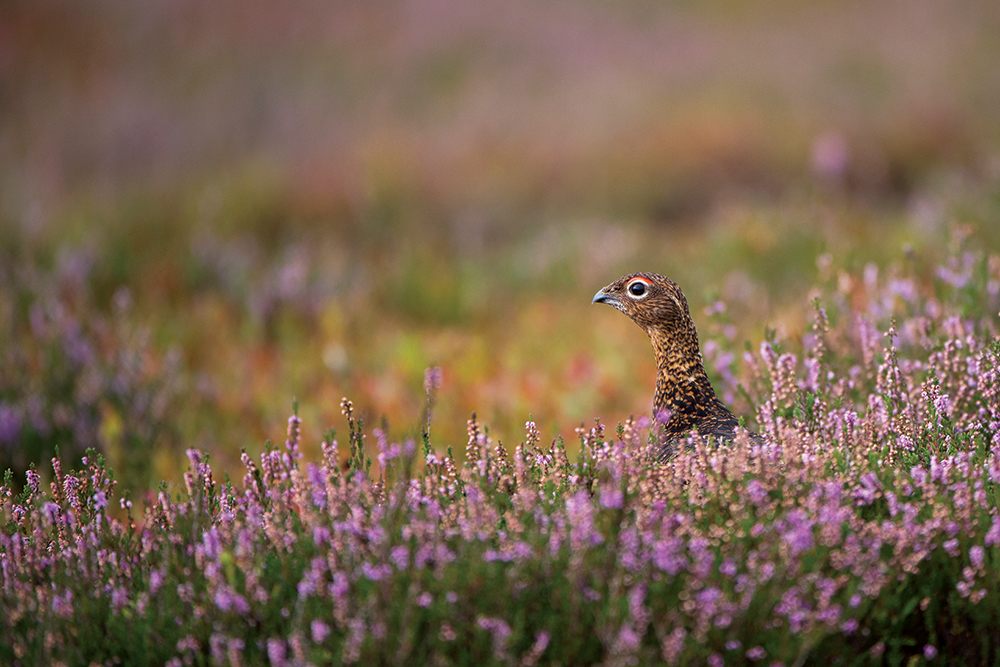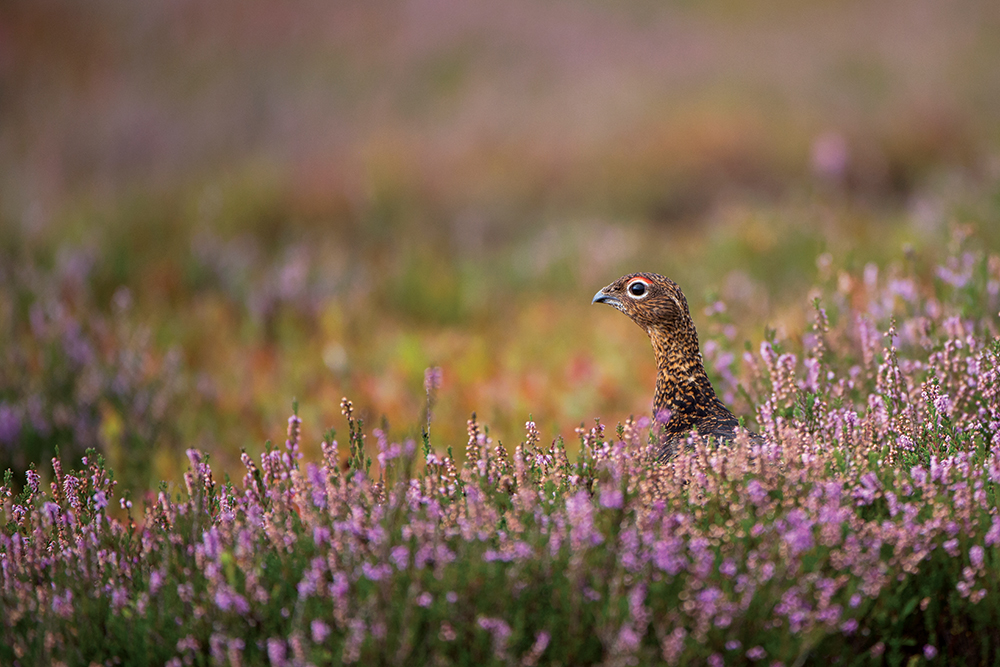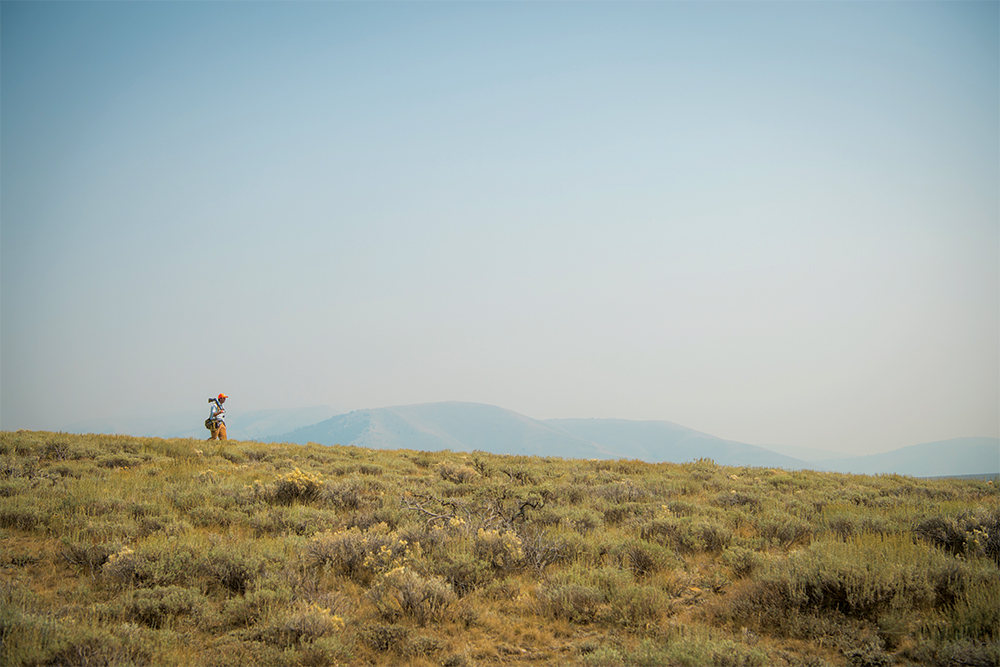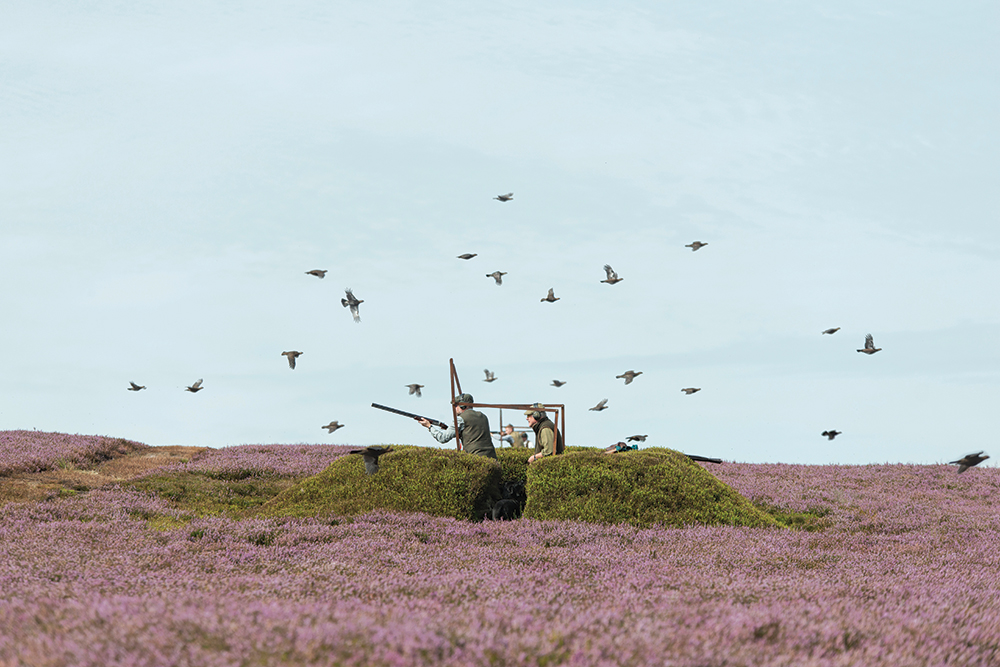A Season of Grouse

Growing up on a rural farm in the east of England, I spent my formative days chasing pigeons and rabbits with a bolt-action .410. My trusty sidekick, Kensey the English cocker, would follow along, trying his best to prevent me from wreaking havoc. He also ensured I harvested more game than I deserved.
Every once in a while, “Lady Luck” visited, and I would flush partridge. Although more often than not, my excitement would lead me to rush a shot, with the covey escaping unharmed and Kensey despairing of his ineffectual owner. Every so often, however, more through instinct than ability, I’d manage to knock down a bird and reward Kensey with a retrieve.
In those early years, if I wasn’t out chasing game, I was reading about chasing game, poring over magazines such as The Field and The Shooting Times. Indeed, I lived an extravagant sporting life vicariously through the experience of the top shots of the day. If anyone had asked what I did for a living, I’d no doubt have said I was a hunter!
In this alternate universe, my game season always started in August on the Glorious Twelfth. Of course, I would have been invited to yet another of the top moors to shoot driven red grouse.
My reality was somewhat different. Until my early 20s, my only confirmed grouse sightings were fleeting glimpses when I traveled to stay with my grandparents in northern England. Moorland grouse hunts were simply the musings of a youthful mind and still some way from reality. I never imagined I’d get to chase these grouse, let alone their cousins across the pond.
The red grouse has always elicited an unmatched sense of passion and desire in my hunting soul. Whether it’s the inaccessibility of grouse habitats or the rarity of the experience, a force draws me to seek grouse hunting opportunities. I now appreciate that these symptoms are common among grouse lovers.
As time passed, opportunities arose for me to experience driven shooting for red grouse in the United Kingdom, as well as hunts for prairie chickens in South Dakota and sharp-tailed grouse in Montana. These early grouse hunts served only to whet my appetite for further adventures.
Invariably, the closing of the wingshooting season infuses me with a sense of languor swiftly surpassed by pangs of dejection, with the next season now many months away.
For me, the only cure is to begin preparing anew. Simply put, planning gives my hunting hiatus purpose. During one such moment of melancholy last February, I began to look for adventures to fill the coming season.

As I cross-referenced season openers, I realized that if I planned carefully I could follow grouse season openers across the globe. By starting with British red grouse in August, moving to sharptails in Montana in September, and finally returning to my New England base for Maine ruffed grouse in October, I could experience three grouse openers in the same season.
This idea rapidly gained traction in my mind. The thought of chasing grouse around the world captured my imagination. However, hard work lay ahead. I began, slowly, to plan and prepare for a trip that would require more than 11,000 miles of travel across two continents.
The next five months flashed by, and before I knew it I was arriving in Yorkshire, England for the first leg of my season of grouse. As I drove through the crags and limestone pavements of Yorkshire Dales National Park, I felt a sense of national pride. Though red grouse may be biologically identical to the willow ptarmigan of North America, the heather moorland of the United Kingdom makes a red grouse hunt inimitable.
Unlike the sharptail and ruffed grouse hunts that lay ahead, my red grouse hunt would be a traditional British driven shoot, with birds pushed towards the waiting guns, rather than hunting over dogs.
Our team of nine gathered early the next morning in a quaint stone shooting lodge at the base of the valley we were to shoot. Fog shrouded the surrounding hills as the sun fought for control of “God’s own country.”
Following coffee and a shoot briefing, we drew pegs, collected our butt sticks, and loaded into vehicles. By the time we had ascended to the top of the moor, nearly 2,000 feet above sea level, the fog had dissipated, leaving the sun to conquer the uninterrupted views of glistening purple heather carpeting the spectacular hilltops.

We proceeded to shoot alternating upwind and downwind drives as we crossed the moor. At each drive we would rotate butt positions to even the shooting chances. The downwind drives delivered spectacular views of rocket-powered grouse breaching the line of butts and, more often than not, evading the shots of our enthusiastic guns. The upwind drives afforded an altogether different challenge, with grouse hitting the wind and flaring across and away from the line of waiting guns whenever they detected their presence.
The red grouse proved worthy adversaries as our team enjoyed wonderful opportunities to harvest these tough wild gamebirds over the course of four carefully planned drives.
While the red grouse is a spectacular bird to hunt, it is the scenery of northern England and Scotland and the camaraderie of shooting in a team that makes this sort of experience so very special.
Upon completing the first leg of my journey, I traveled briefly back to Boston to exchange my traditional British shooting wardrobe of tweed jacket, plus fours, and flat cap for my North American upland setup of ankle boots, brush pants, and strap vest.
My next stop was southwest Montana, where I met an old friend and Livingston legend, Ben O. Williams, for a few days chasing sharptails on the High Plains. My trips to Montana have become something of sporting pilgrimages in recent years. Certainly on past visits, I had flushed sharp-tailed grouse by accident when hunting Huns, but I’d never before come with the specific purpose of hunting them.
Unlike my red grouse adventure, in Montana I felt as though I’d worn through the soles of my boots by the time a pair of Brittanys locked up on our first covey. Waiting in the butt for my first covey of red grouse had proven tense, but chasing grouse on the High Plains left me breathless, literally. And that’s before I’d fired a shot!

Still, we found our share of sharptails. And with the dogs enduring some stifling September heat, they earned every point.
Too soon, hot summer days gave way to cool breezes from the north, signaling that my time in Montana was at an end…but not before a collection of memorable points enabled a full game vest. I’d set out to experience the best of grouse hunting in the West, and Montana had not disappointed.
Back at home in Boston, I paused to spend time with my wife and daughter. Thus far, my season of grouse had taken me across the pond to the United Kingdom and then back over the United States to Montana. Thankfully, the final leg of my journey was a mere three hours by car to hunt ruffed grouse in Maine.
In my absence, the New England fall had taken hold. I had left with green leaves adorning the cityscape, only to return to auburn hues everywhere. These colors intensified as I drove north. I was stepping into the unknown, having previously visited Maine, but only for sightseeing or skiing. The closest I had come to hunting grouse had been spotting one perched in a tree from a ski lift.
I pulled into my guide’s yard around 8:30 a.m., and he was already loading the brace of English setters that would be working for us that day. After brief introductions, we climbed into his truck and made a beeline for one of his favorite coverts. One difference for this hunt was that my red cocker spaniel, Austin Powers, was along for the ride, much to our collective delight.
We worked one setter at a time, while Austin tagged along, waiting patiently for a retrieve.
The weather was spectacular, with shards of light cutting through the magnificent New England fall foliage. A cool night had left its white comforter behind, giving the morning a crunch I had not felt since last season.


In turn, the setters worked close in tight coverts across rolling hills. Certainly the ground wasn’t as easy walking as the grouse thickets of the Midwest. However, mixed-age stands of aspen signified I had arrived in prime grouse country.
During a stunning morning, we managed to bump a couple of woodcock without getting a solid point. With little sign of grouse, we decided to take a lunch break and reconsider our strategy.
Revived, we relocated to an area of long-abandoned orchards and dense vegetation. Swapping dogs as necessary, we methodically covered the coverts. Twice during our afternoon hunt, the dogs held grouse on point, only for the vegetation to prevent a safe shot.
Before we packed it in, with both setters enjoying a well-earned rest, Austin got his chance to shine. My guide and I walked a small cut track between two alder thickets, while Austin quartered in front of us, diligently covering 20 yards on either side in a figure-eight pattern.
Suddenly, Austin caught scent and disappeared under a patch of cover to our left. Without further warning, a woodcock broke from the back of the patch and headed for safety. My reactions took over, as I instinctively shouldered my gun and shot.
Though it would perhaps be scant reward to some, Austin retrieving that woodcock was, to me, the perfect way to end a day in the field and a season of grouse. It may not have been what I traveled to hunt, but the woodcock proved a wonderful bird both to pit my wits against and to enjoy on the table. This day also reminded me why I love to hunt and why I knew I must return to Maine one day. An uncertain outcome, with an element of skill, is a powerful draw.
During my season of grouse, I’d traveled more than 11,000 miles in search of some of the finest wingshooting the world has to offer. I’d tested myself against three of the most challenging wild grouse species. The weight of my game bag mattered not during a once-in-a-lifetime adventure. The birds I saw, the lands I walked, the dogs I hunted over, and the people I met meant I would not forget that fall.
Now that I’m based in Florida, hunting grouse has become somewhat more taxing. Still, I plan to return to the moors of Yorkshire and the high plains of Montana again this fall. And one day I hope to return to Maine to harvest my first ruffed grouse.
Originally published in Volume 7, Number 1 (Dec-Jan 2019) of Covey Rise.
























